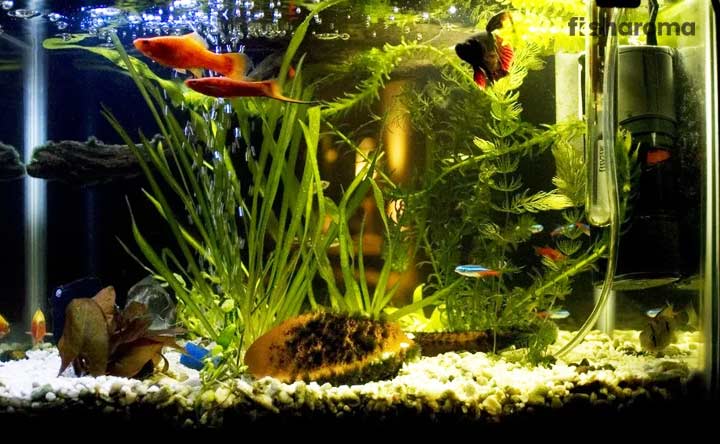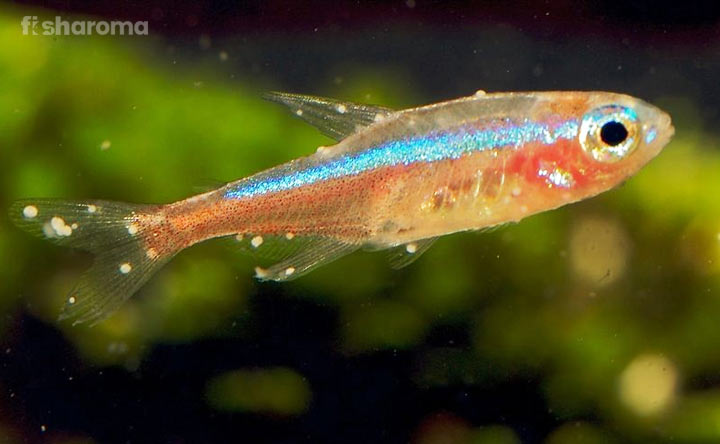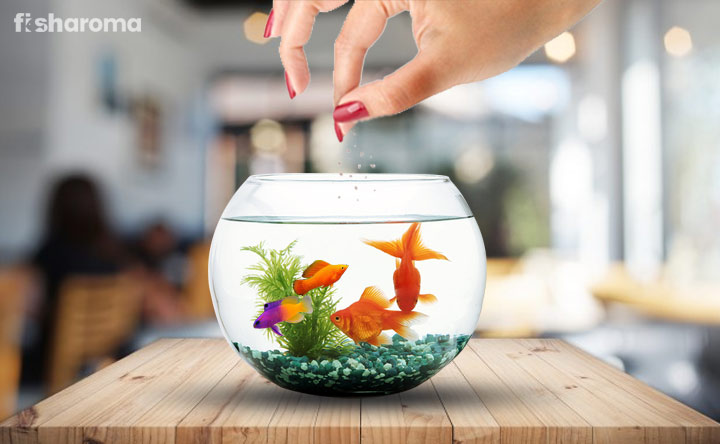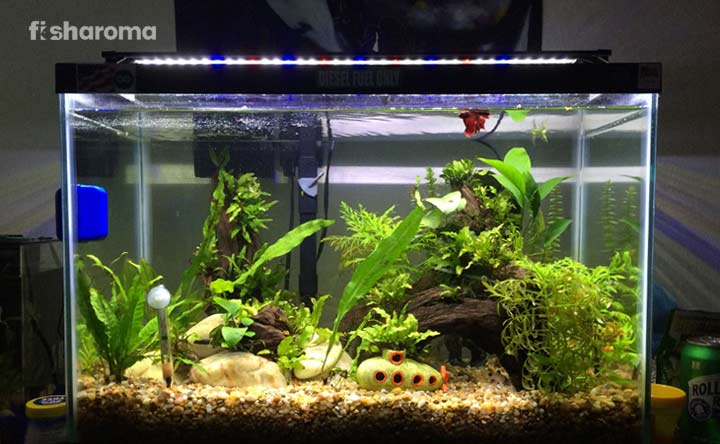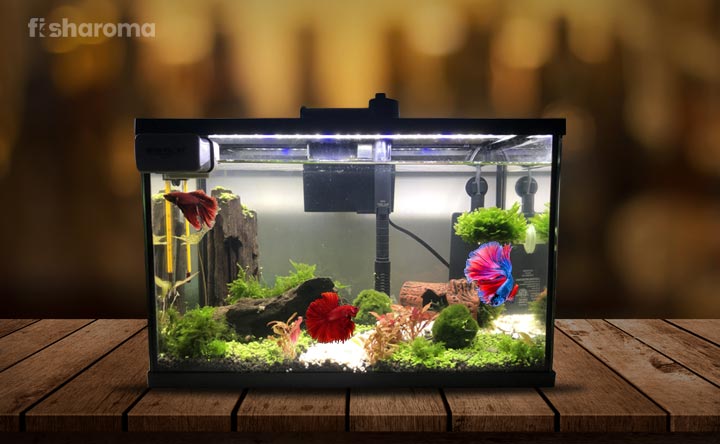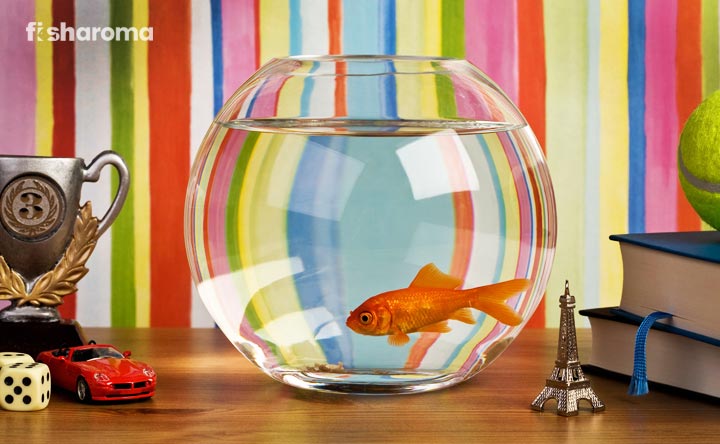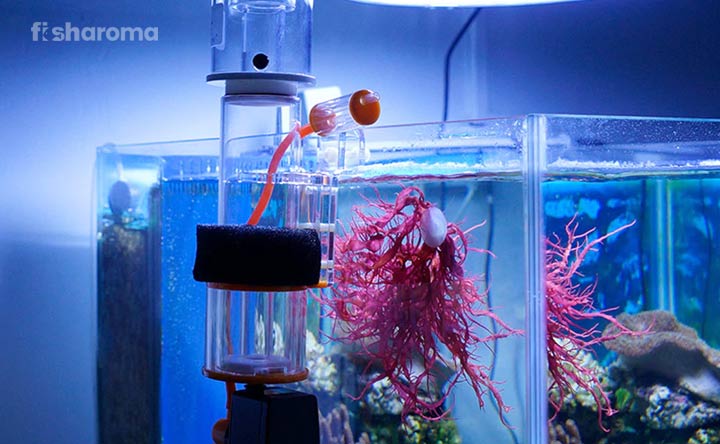The Ultimate Care Guide to Fire Eel
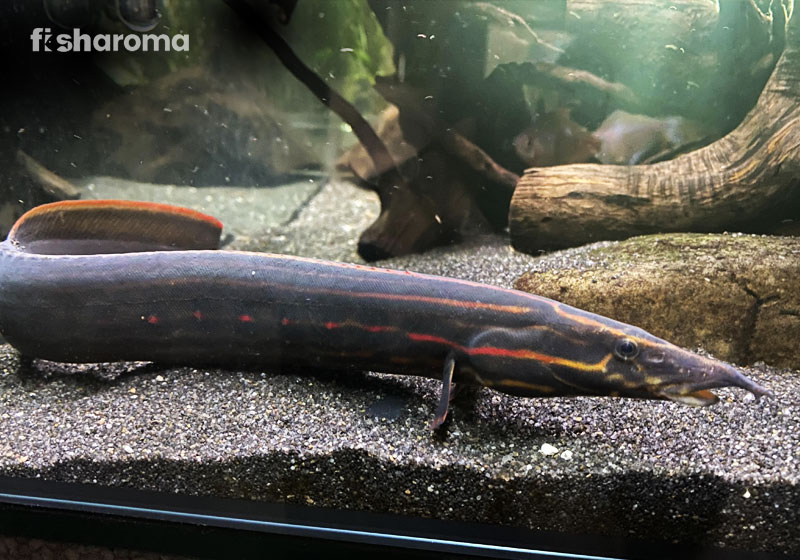
Eels might not be everyone’s cup of tea since they are undoubtedly an unconventional aquatic pet. However, that doesn’t mean that people don’t want them in their freshwater tank. Although there are various types of eels that you can host in your tank, not all are easy to take care of. This is why we are bringing before you the care guide of an eel that would be fairly easy for you to take care of. We are speaking of Fire Eels.
They might look intimidating but with proper guide and care, you can host them quite easily in our freshwater tank. So, without any further ado, let us find out how to take care of them healthily in your freshwater tank.
Key Specifications of Fire Eel
To help you get a better grasp on their lifestyle, here is a table that lists down some of their key specifications:
| Scientific Name | Mastacembelus erythrotaenia |
| Origin | Southeast Asia |
| Lifespan | 10 years |
| Colours | Brown with red/orange |
| Temperament | Peaceful |
| Size | 20” (60 cm) |
| Diet | Omnivore |
| Family | Mastacembelidae |
| Compatibility | Low |
| Tank Size | 80 gallons |
| Care Level | Easy |
Overview
Members of the Mastacembelidae family, Fire Eels are counted among the largest freshwater tank pets that you can host in your home. They are extremely popular among those aquarists who are looking for a non-mainstream aquatic pet.
They are easy to care for with hr only thing that you need to worry about them being their compatibility issue owing to their predatory nature. It goes without saying that hosting them in your freshwater tank would invariably add a unique dimension to the overall ambience of the environment.
Origin & Habitat of Fire Eel
Native to Southeast Asia, Fire Eels are mostly found on the river beds in the wild. A major population of Fire Eels is seen in Myanmar, Vietnam, Pakistan, Indonesia, Laos, Cambodia, and Malaysia.
Owing to the fact that they dig burrows in the wild, they are mostly found in the slow currents of rivers and lakes. For the same purpose, they love being around muddy areas. They prefer a low lighting setting and are comfortable with floating plants instead of rooted plants. It should also be noted that they need well-oxygenated areas to survive.
Appearance of Fire Eel
Fire Eels have the appearance of a snake. Their long and slender bodies are covered with scales. The dorsal fins of this bottom-dweller aquatic species are divided into two different parts. Both the dorsal and the anal fins are extremely narrow as well as long. They are located near the end of their caudal fin.
You would also notice a fully-developed tail in them. You might be surprised to know that these creatures don’t have any abdominal fins.
Size of Fire Eel
In the wild, Fire Eels can reach a length of an astonishing 3.3 feet, which is equivalent to almost a metre. But, in the captive environment, they don’t reach such length due to the naturalistic elements missing in a home tank and for the sheer fact that they don’t have enough space that would encourage that gigantic length.
However, they still are one of the largest freshwater aquatic pets that you can have. In a captive environment, they grow to a length of 20” (60 cm).
Colour of Fire Eel
Fire Eels have a dark brownish body with orange or red hues on them. Depending on the condition of your freshwater tank and the age of your Fire Eel, they may or may not have spots on their bodies.
Male Fire Eels tend to be thinner and more brightly coloured than their female counterparts. Females usually are larger and have dull hues than males. You would be able to differentiate between male and female Fire Eels more easily during breeding as the colours of male Fire Eels become more intense during the process of breeding.
Behaviour of Fire Eel
They can somewhat be shy which explains why they spend so much time hiding behind plants, rocks, and various ornaments in an aquarium. They are also nocturnal beings and stay active during the night.
You would notice them spending a considerable amount of time burrowing and digging. So, keep that in mind while choosing the type of aquatic plant you are keeping in your tank.
It uses the end of its nose to look for food at the bottom of the aquarium and you would often find it doing so. You might see them often hiding underneath the substrate with only their eyes peeping out.
Lifespan of Fire Eel
In the wild, a Fire Eel can survive up to 20 years. However, in a captive environment, they don’t live that long. Usually, they survive up to 10 years in a home aquarium. This means that you probably have to invest a lot of time and care into them.
So, make sure you are ready for it. Don’t just dump them into a nearby pond after a few years since that would harm not only them but also the creatures living in that water body.
Diet of Fire Eel
Fire Eels are omnivorous by nature and are heavily dependent on protein. In the wild, they feed upon snails, worms, insect larvae and small crabs.
Interestingly enough, they recognise their owners and would accept being fed from their hands. However, be careful of not getting hurt. Also, be careful since the sharp spines of Fire Eels emit a dangerous slime which is toxic by nature. So, handle them by wearing gloves. Make sure the gloves don’t scratch their body as they might attack you back when they feel hurt.
You may also feed them frozen and dried food but make sure to thaw and moisten them respectively before putting feeding them. Their large size implies that they need a lot of food. So, be prepared for that.
A proper diet of Fire Eel should contain the following:
- Bloodworm
- Brine Shrimp
- Tubifex
- Worms
- Insect Larvae
- Small snails
- Crabs
- Small fish
Tank Requirements for Fire Eel
Making sure that they are comfortable is crucial for their health. For this, you need to keep the following things in mind.
Tank Size
Since they are one of the largest aquatic pets that you can have in your tank, you need large tanks for them. We recommend you keep one Fire Eel in a single tank. For a Fire Eel, you would need an 80-gallon tank.
Tank Lid
Tank lid for a Fire Eel tank is of utmost necessity since you don’t want your children or pet dogs and cats to disturb them and get hurt in the process. It would also ensure that they don’t escape from the tank. Furthermore, it would keep dust and dirt from accumulating in the tank.
Substrate
Fire Eels are bottom-dwellers, which means the choice of the substrate will play a vital role in their health. While choosing the substrate, the main thing you need to keep in mind is the fact they love digging burrows. Therefore, it is ideal if the substrate is sand-based.
Please make sure that the substrate is thick as Fire Eels usually dig around 2” (5 cm) of fine sand. In addition, the sand should be fine so that it doesn’t injure, scratch or damage the body of your Fire Eel.
Filter
They need a strong filtration system because not only do they need clean water but they also require well-aerated or oxygenated water. Therefore, we recommend you invest in a proper filtration system for the freshwater tank that you keep them in.
Ornaments
As we have stated above, these aquatic pets can get shy and spend a major portion of the day hiding, you need to include various ornaments in your freshwater tank. Therefore, get creative with your décor. Include pebbles, rocks, artificial castles, caves, etc. in the tank you host your Fire Eel in. However, you need to ensure a few things.
First of all, you have to make sure that the ornaments you keep don’t have any toxic colouring or sharp edges as that would invariable negatively affect their health. Also, you need to look out for the fact that the castles and caves you keep (if you keep them) have large enough holes for your Fire Eel to slip in and out without getting stuck in it.
Lighting
These unconventional creates prefer staying in a low-light setting. So, make sure the lights are not too strong. Also, make sure the lights stay off for at least 12 hours in a day since they are nocturnal beings.
Presence of Flora
Fire Eels appreciate plants in their vicinity since that reflects their natural habitat. However, you can’t keep rooted or delicate plants with them since they would get uprooted or destroy by them. A major reason why they need plants is because they serve as hiding spots for them. Ideal aquatic plants would be Guppy Grass or any floating plants.
Remember, floating plants will also help in blocking out extra light which serves their purpose of having dim light in their aquarium. However, make sure that the floating plants don’t completely block the entire lighting source or oxygen supply to the aquarium. Too much of anything is a bad idea.
Cleaning Method
They would thrive well in a clean environment. Therefore, make sure you clean the tank regularly every month. To clean the tank, empty the tank water and place your Fire Eel in a bucket and cover it with a lid so that it can’t escape.
Never use any soap or any chemicals to clean the tank since their residue would always stay and harm your aquatic pet. All you need is a soft cloth that is dipped in lukewarm water. Use it to wipe off the interior walls of your tank. Clean the substrate and ornaments by taking them out of the tank by putting them directly under running tap water. This would help in getting rid of debris.
You can scrape off algae with your hand or use an algae-scraper for it. Regularly trim the aquatic plants so that they don’t become an obstacle to your Fire Eel in any shape or form.
Water Type for Fire Eel
Fire Eels are used to surviving in the myriad water parameters of the lowland rivers present in the majority of the Southeast Asian countries. As such, it is your duty to replicate that type of water as much as you can in the tank that you host them. With that being said, keep in mind the following parameters.
Temperature
Fire Eels prefer slightly warm water being the tropical creatures that they are. Therefore, try to maintain the temperature of the freshwater tank that you keep them in between 75-82°F (24-28°C). Having an aquarium heater would assist you here. If your heater doesn’t have a temperature reading, then you need to get an aquarium thermometer as well.
pH Level
The pH level of the water should be 6.0-7.5. To maintain this optimal level of pH, you need to have a pH testing kit.
Hardness
The general hardness of the aquarium that hosts Fire Eels should be 6-12 dGH.
Replacement Procedure
Water replacement is the key to their survival. We are not asking you to keep crystal clear water, but basic cleanliness is essential for them to survive. As we have stated earlier, they need a strong filter and well-aerated water, both of which can be achieved with regular water changes.
Never replace the entire content of water from your freshwater tank simultaneously since that would destroy the beneficial bacteria. Also, make sure the new batch of water that you are adding has the same parameters (pH level, hardness, temperature) as that of the old batch or existing batch of your tank.
You can replace 10% of the tank water on a weekly basis or 20% of the tank water every 15 days or 50% of the water on a monthly basis. Choose any of these three.
Compatibility of Fire Eel
Despite having a peaceful demeanour, they can get aggressive when you keep more than one Fire Eel in a single tank. So, we strongly suggest you keep only one per tank.
Suitable Tankmates for Fire Eel
Fire Eels are predatory, which means any fish smaller in size than them will be in danger if you keep them with a Fire Eel. Having said that, there are certain species that you can keep with a Fire Eel, the names of which are as follows:
- Oscar Fish
- Green Terror
- Barbs (medium to large)
- Angelfish
Unsuitable Tankmates for Fire Eel
Do not keep any species that are smaller in size than Fire Eels with them under any circumstance. This is because they would become their prey.
Breeding of Fire Eel
Breeding Fire Eels in a captive environment can be extremely difficult to the point that it is almost impossible. Thus, we do not recommend it at all. This is mostly because you can’t keep more than one Fire Eel together in a single tank since they become extremely aggressive to one another.
Also, you would need an extremely large tank for keeping both of them together because they would need huge space like in the wild. Thus, you need to rely on pet stores to buy young Fire Eels.
Summary
Fire Eels are magnificent creatures. They are peaceful but are predatory by nature. You can’t keep more than one Fire Eel in a single tank together. Their dietary requirements are heavily dependent on protein and live foods.
Breeding them is not possible and they need well-aerated and clean water to survive. Since they are extremely large and have a long lifespan, you need to commit a lot to them. So, keep these things in mind before deciding to host them.
Care Guides of Other Similar Pets
- Ghost Shrimp Care Guide – These ethereal creatures are highly in demand and peaceful by nature. Learn how to care for them from this space.
- Moray Eel Care Guide – They may seem intimidating and yes they are difficult to rear, but with our systematic care guide, you will be able to take care of them healthily and easily.
- Pet Panther Crab Care Guide – Want to bring in some crabs to your aquarium? Take a look at our comprehensive care guide for Pet Panther Crabs then.


